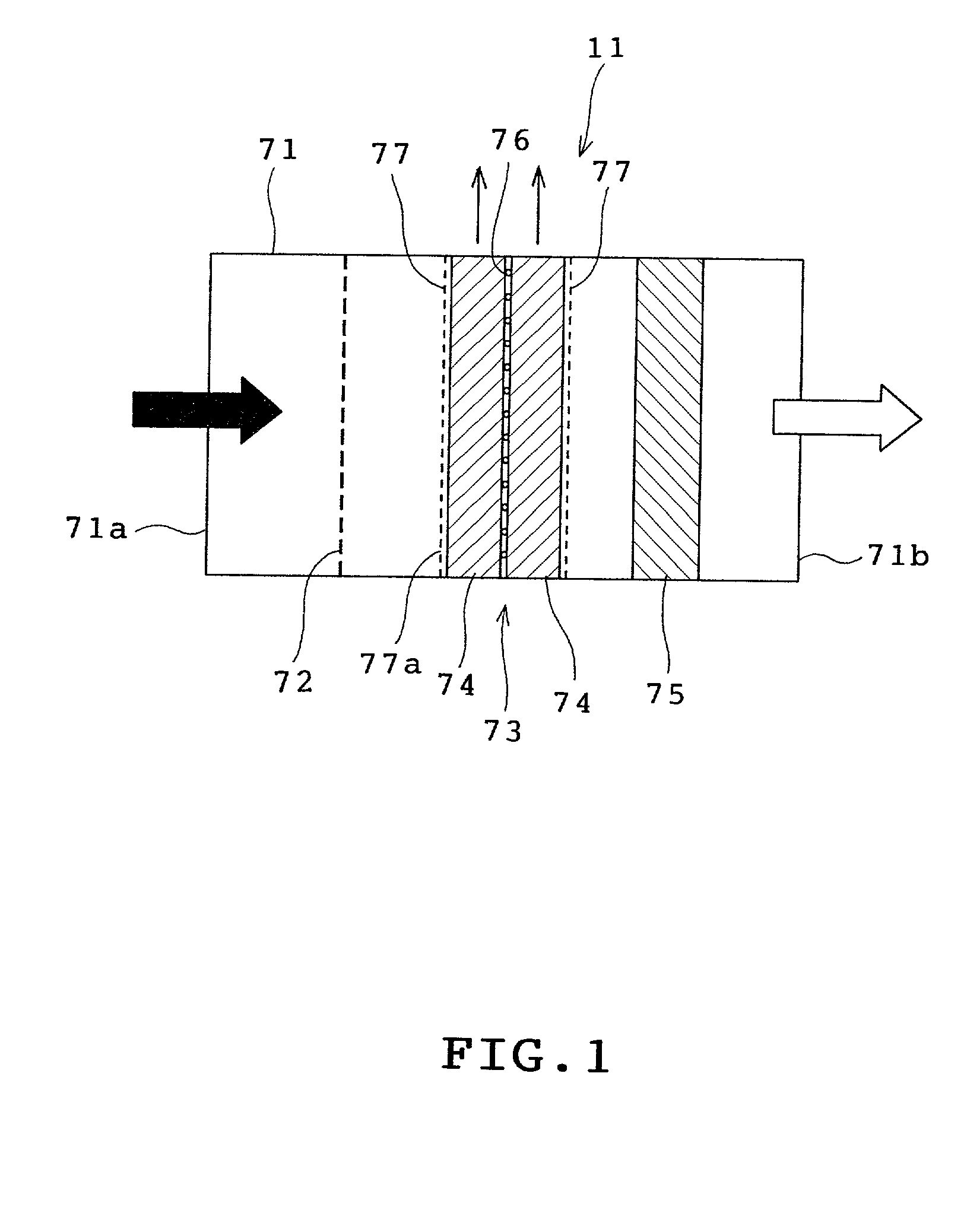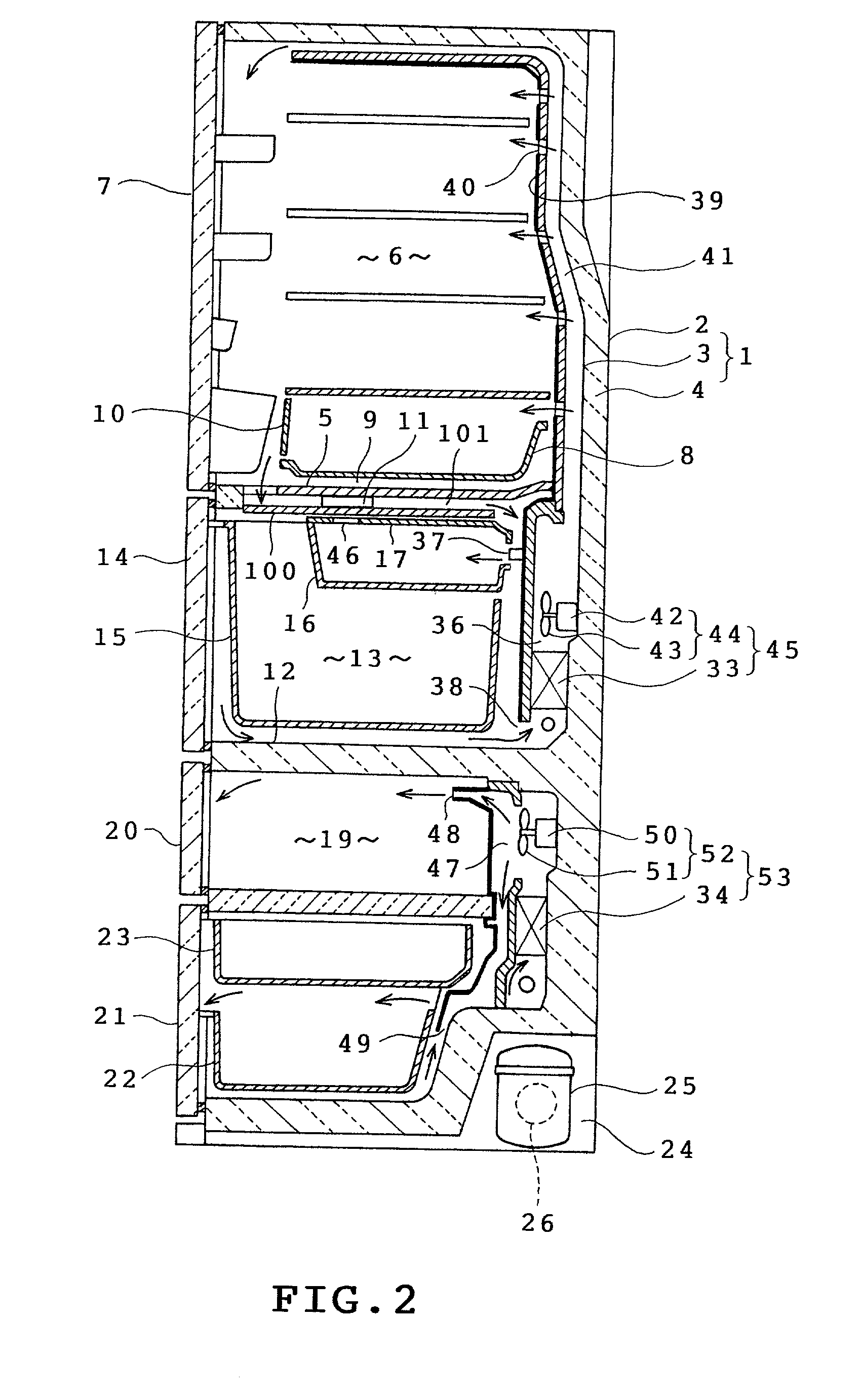Refrigerator and deodorizer producing ozone by high-voltage discharge
a technology of ozone and deodorizer, which is applied in the field of refrigerators, can solve the problems of ozone odor, odor component cannot be completely decomposed, bacteria tend to increase, etc., and achieve the effects of preventing ozonic concentration, preventing ozone odor, and maintaining freshness of food
- Summary
- Abstract
- Description
- Claims
- Application Information
AI Technical Summary
Benefits of technology
Problems solved by technology
Method used
Image
Examples
fourth embodiment
[0072] the side A confronting the mechanism 82 side and a side B opposed to the side A are changeable with each other when each photocatalyst module 74 is attached to the deodorizer 11B. Even when the photocatalytic reaction is reduced with a certain amount of contaminant adherent to the side A, the photocatalytic reaction can temporarily be activated as the result of change of the sides A and B with each other. Thus the photocatalyst module 74 can be used more effectively.
[0073] FIG. 12 illustrates a fifth embodiment. Only the differences between the first and fifth embodiments will be described. In the fifth embodiment, the deodorizer 11C includes a built-in blowing fan 84 provided in the body thereof. The other construction of the deodorizer is the same as in the first embodiment. The fan 84 can be operated independently of the first fan 43. Accordingly, even when the operation of the first fan 43 is interrupted during the energy-saving operation or defrosting operation of the r...
first embodiment
[0075] The high-voltage applying section 88 includes an AC converting section (not shown) for converting a DC power supply from the batteries 89 to a corresponding AC which is stepped up by the step-up transformer 88a and then converted to a corresponding DC by a DC converting section (not shown) provided at a secondary side of the step-up transformer 88a. Finally, a pulsed high voltage of the negative polarity is applied across the discharge electrodes 76 and the counter electrodes 77 in the same manner as in the
sixth embodiment
[0076] the deodorizer 85 is driven by the batteries 89 with the use of the step-up transformer 88a, whereupon the deodorizer 85 is discrete from the refrigerator. Consequently, the deodorizer 85 can be disposed at any location in the refrigerator, for example, near food emitting a more offensive smell, such that deodorization can efficiently be performed. Further, when the deodorizer 85 is disposed in a refrigerator without a deodorizing function, deodorization can be performed.
PUM
| Property | Measurement | Unit |
|---|---|---|
| wavelength | aaaaa | aaaaa |
| flow rate | aaaaa | aaaaa |
| flow rate | aaaaa | aaaaa |
Abstract
Description
Claims
Application Information
 Login to View More
Login to View More - R&D
- Intellectual Property
- Life Sciences
- Materials
- Tech Scout
- Unparalleled Data Quality
- Higher Quality Content
- 60% Fewer Hallucinations
Browse by: Latest US Patents, China's latest patents, Technical Efficacy Thesaurus, Application Domain, Technology Topic, Popular Technical Reports.
© 2025 PatSnap. All rights reserved.Legal|Privacy policy|Modern Slavery Act Transparency Statement|Sitemap|About US| Contact US: help@patsnap.com



